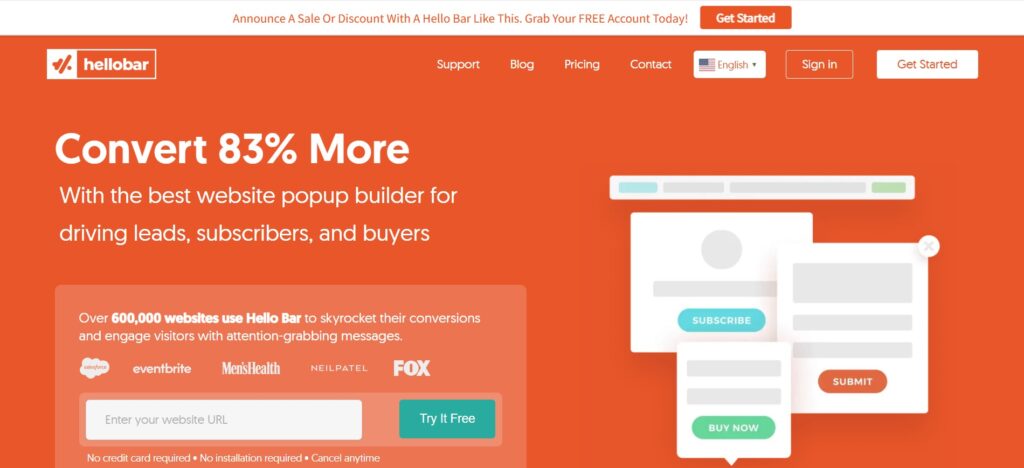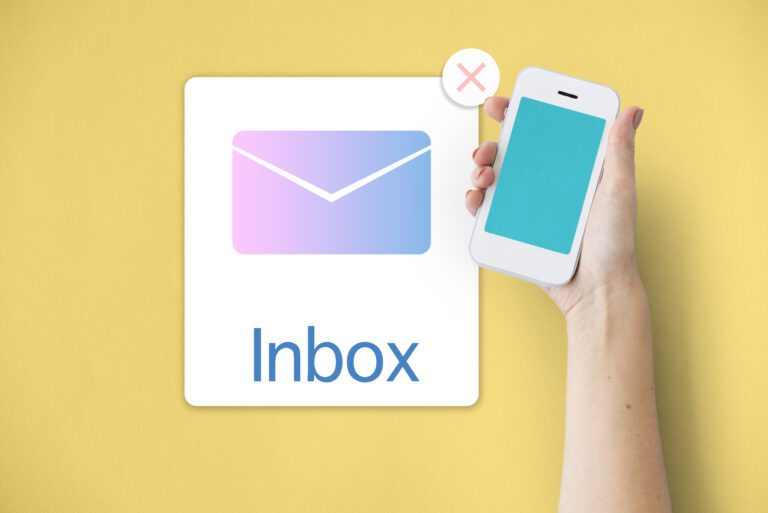Email List: What’s Recommended… and What’s Legal?

I hope you enjoy this blog post. If you want Hello Bar to grow your leads, click here.
Author:
Mansi
Published
October 9, 2025

Table of Contents
Everyone in business knows email works. It’s personal, direct, and one of the few marketing channels that can bring results without spending a fortune.
But then reality hits: to send emails, you need an email list, and building one from scratch takes time.
That’s when the temptation starts. You see ads offering to “sell verified email lists,” promising quick access to thousands of potential customers. It looks easy. A few clicks, a spreadsheet of leads, and your campaign is ready to go.
But here’s the real question: is that legal? And even if it is, is it smart?
This guide breaks down both sides, what’s legal and what’s recommended when it comes to building and using an email list. You’ll learn what the law actually says (in plain English), why shortcuts usually backfire, and how to build a list that actually helps your business grow, safely and sustainably.
What Buying an Email List Really Means
Buying an email list sounds simple: you pay for a spreadsheet full of email addresses and send your marketing messages to those people.
But there are layers to this. Some companies sell lists; others rent them.
When you buy an email list, you get full ownership. You can email those people directly from your system.
When you rent an email list, the owner sends your email on your behalf. You never see the actual addresses, it’s more like paying for an ad placement inside someone else’s newsletter.
The difference matters, because when you buy a list, you’re responsible for every message that goes out. And that’s where email list legalities come in.
Before sending a single email, you need to know what’s legal in the regions you’re targeting. The rules are not the same everywhere.
Email List Legalities in the U.S.
Let’s start with the United States.
Here, commercial emails are regulated by the CAN-SPAM Act, which was passed back in 2003. Unlike Europe or Canada, U.S. law doesn’t require prior consent to send someone a marketing email.
Yes, technically, you can buy or rent an email list and contact people without their permission. But that doesn’t mean you can do it however you want.
The CAN-SPAM Act has strict conditions you must follow:
- No fake or misleading header information. You can’t disguise who the email is from.
- No deceptive subject lines. Don’t trick people into opening.
- Include your business address. A real, physical location, not a P.O. box.
- Add an opt-out link. And remove anyone who unsubscribes within 10 business days.
- Identify the email as an advertisement. Be upfront about it.
So yes, it’s legal to buy or rent an email list in the U.S., but if you don’t follow those rules, you could face heavy fines.
The bigger problem isn’t the law, though. It’s how most email platforms and inbox providers treat these lists.
We’ll get to that soon.
Email List Legalities in Canada
Now, let’s move north.
Canada’s CASL (Canada Anti-Spam Legislation) is one of the strictest in the world.
Under CASL, you can’t send marketing emails without the recipient’s consent. And “consent” means they actively said yes, not that they forgot to say no.
That means if you buy an email list that includes Canadian addresses, you’re breaking the law. Period.
There are two types of consent under CASL:
- Express consent: When someone signs up directly, for example, through a form or popup on your website.
- Implied consent: When there’s an existing business relationship, like if someone bought from you recently.
If your list doesn’t fall into either category, it’s illegal to contact those people.
Even renting a list is risky unless the provider can prove every contact gave proper consent. Most can’t.
So the safest email list recommendation in Canada is simple: never buy one. Always build your own.
Email List Legalities in Europe
Things get even stricter in the European Union.
Europe has two major privacy laws that apply to email marketing:
- The ePrivacy Directive
- The GDPR (General Data Protection Regulation)
Together, these laws make it illegal to send direct marketing emails to individuals without their explicit, informed, and specific consent.
In other words, if someone didn’t directly sign up for your list, you can’t email them.
Even if you buy an email list from a “trusted vendor,” it’s almost impossible to use it legally in the EU. Here’s why:
When a vendor collects consent, that consent applies only to them, not to whoever buys the list later. Unless the contact was specifically told that your company would email them, the consent doesn’t count.
That’s why in Europe, buying lists is basically useless.
Renting lists can be acceptable, but only when:
- The list owner sends the emails themselves, and
- They have proper consent to promote third-party offers.
If you’re marketing to EU audiences, your only safe route is building your own email list from scratch.
The Problem Isn’t Just Legal, It’s Practical
Even in places where it’s technically legal, buying an email list almost never works well.
Here’s why:
1. You Don’t Know What You’re Getting
Most of these lists are outdated, scraped from random websites, or filled with fake contacts.
Imagine paying for 10,000 “verified” emails, only to find half of them bounce or belong to people who’ve never heard of you.
That’s not just wasted money, it can destroy your sender reputation.
When too many of your emails bounce or get flagged as spam, inbox providers like Gmail and Outlook start tagging your messages as suspicious. Once that happens, even your legitimate campaigns stop landing in inboxes.
2. The Results Are Terrible
Lead generation experts will tell you the same thing: purchased email lists rarely deliver good performance.
A manually built email list with genuine subscribers might get open rates of 30% or more.
A bought list? You’ll be lucky to hit 5–7%.
Low open rates, high unsubscribe rates, and tons of spam reports, that’s the typical outcome.
3. You Lose Control Over Quality
When you build your own email list, you know exactly who signed up, what they care about, and how they found you. You can segment them, personalize emails, and send relevant offers.
When you buy one, you’re flying blind.
You don’t know their interests, their consent status, or even if they exist. That’s why most experts’ email list recommendation is simple: never buy one.
What About Email Service Providers (ESPs)?
Even if you manage to follow all the legal rules, you’ll still face another barrier, your email service provider.
Most ESPs, like Mailchimp, Klaviyo, ConvertKit, and Constant Contact, have strict anti-spam policies.
Their business depends on keeping their servers clean and their sender reputation high. So if you upload a purchased list and start getting high bounce or spam rates, they’ll suspend your account immediately.
In fact, most providers will reject you outright if your list includes third-party or bought contacts.
That’s why this discussion isn’t just about email list legalities, it’s also about sustainability.
You might find a smaller, lesser-known provider that looks the other way, but if your emails keep landing in spam folders, the problem remains.
What You Should Do Instead: Building Your Own Email List
If you’re serious about long-term results, the only smart and legal path is building your own email list.
It takes more time upfront, but every subscriber you earn is someone who actually wants to hear from you.
Here are the most effective and legal ways to do it.
1. Use Hello Bar to Capture Emails on Your Website

Hello Bar makes it easy to collect subscribers without annoying visitors.
You can add:
- Popups offering discounts or freebies
- Floating bars promoting newsletter signups
- Slide-ins on blog pages
- Embedded forms for specific sections
The beauty of tools like Hello Bar is that they make consent crystal clear. Visitors know exactly what they’re signing up for, which keeps your email list legalities in check.
And when used right, these popups can convert anywhere from 3–25% of your visitors into subscribers, that’s better than any rented list will ever deliver.
2. Add Signup Forms Across Key Pages
Don’t hide your signup forms. Add them where they make sense:
- In your blog sidebar or footer
- At the end of articles
- On product or checkout pages
Explain what people get by joining, updates, guides, deals, or first access to new releases.
Your email list recommendation here is simple: make signups easy and transparent. When people willingly join, you don’t just get emails, you get trust.
3. Offer Value, Not Tricks
People don’t hand out their emails for no reason. Give them something that matters.
You can offer:
- A discount or coupon
- A quick how-to guide
- Exclusive access to a private sale or community
Whatever you offer, keep it honest. Avoid sneaky fine print or hidden checkboxes. Transparency is what separates a legitimate email list from spam.
4. Build Offline Connections
If you attend trade shows, fairs, or in-person events, use those opportunities to collect emails, but do it right.
Ask people if they’d like updates or offers, and let them opt in clearly. You can use a tablet form or scan business cards with consent.
Every contact you collect this way is valid and compliant. It keeps your email list legalities clean and your reputation strong.
5. Clean and Maintain Your Email List Regularly

Even a great email list loses value over time. People change jobs, switch emails, or lose interest.
That’s why cleaning your list every few months is a key email list recommendation. Remove inactive subscribers, bounced addresses, and anyone who hasn’t opened in a while.
This helps improve deliverability and keeps your sender reputation healthy.
A Quick Legal Recap
If you’re dealing with email list legalities, here’s the reality in short:
- U.S. – Buying/renting lists is legal under CAN-SPAM, but risky and tightly regulated.
- Canada – Buying lists is illegal under CASL. Consent is mandatory.
- Europe – Buying lists is practically impossible under GDPR and ePrivacy rules.
No matter where you operate, though, the safest and most effective path is always to build your own email list.
Why Hello Bar Helps You Stay Legal
Tools like Hello Bar aren’t just convenient, they’re compliance-friendly.
They give you:
- Clear consent checkboxes
- Transparent signup forms
- Integration with popular ESPs
- Data stored according to privacy rules
When you collect emails through Hello Bar popups or forms, you’re following the right process from day one. It’s a simple, practical way to keep your email list legalities in order while still growing fast.
Final Email List Recommendation
If you remember one thing from this guide, let it be this:
Buying email lists might look like a shortcut, but it’s almost always a setback.
Building your own email list takes effort, but it’s the only way to stay compliant, keep your deliverability high, and build genuine customer relationships.
Follow the law. Respect consent. Use tools like Hello Bar. That’s not just the legal path, it’s the only one that works long term.
Conclusion
The best marketing doesn’t come from the biggest list, it comes from the right one. Build yours the right way, and you’ll never have to worry about legality, deliverability, or trust again.



